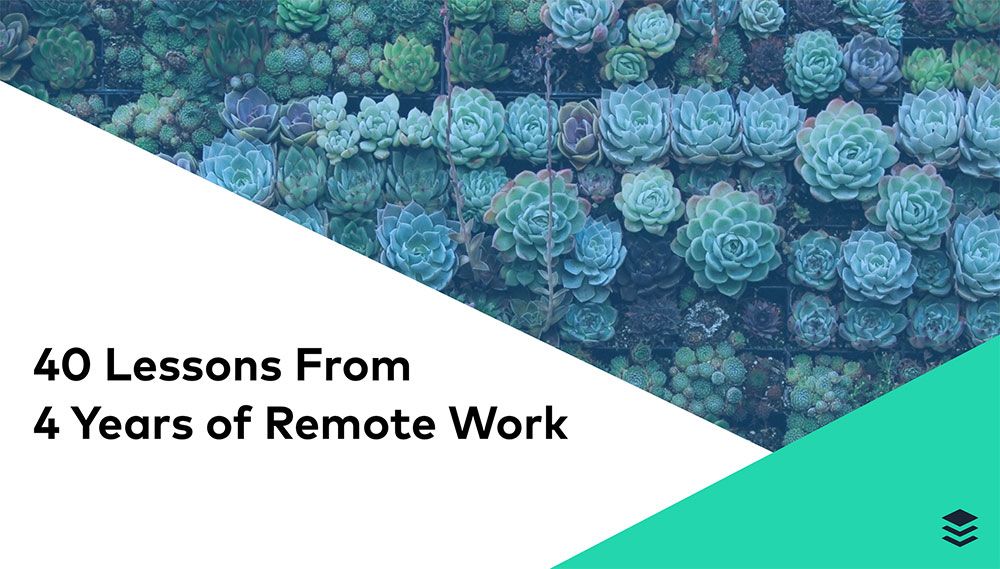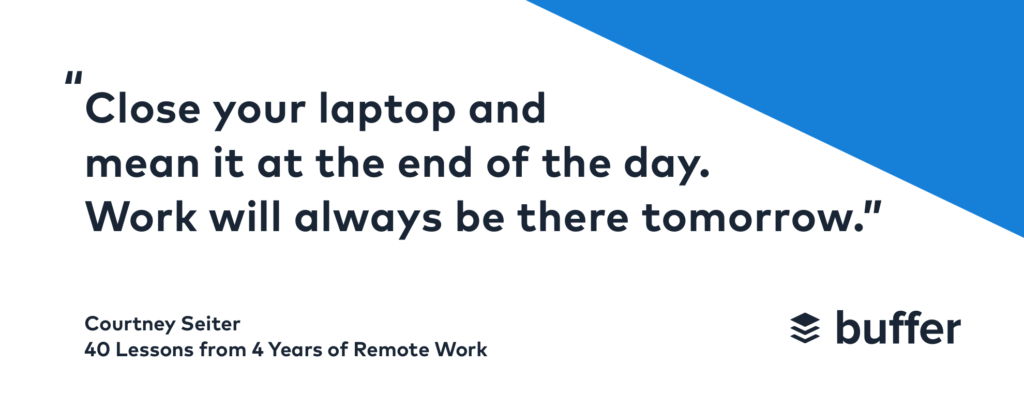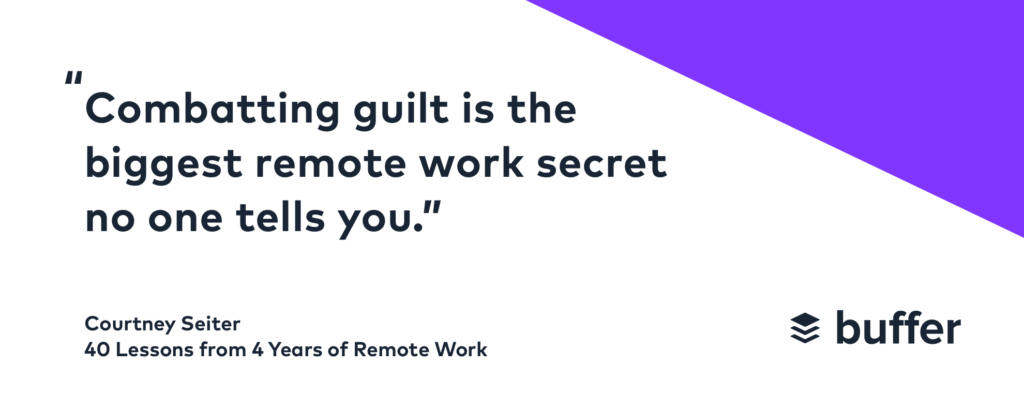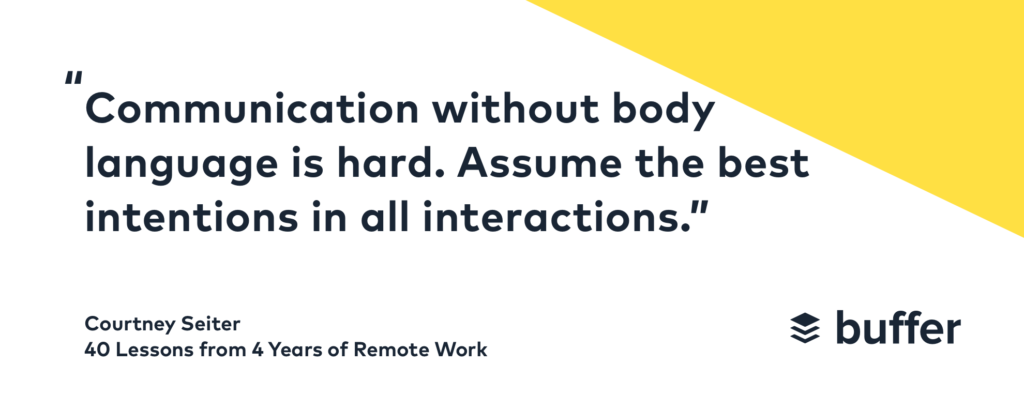This month I celebrated my four-year anniversary of joining the Buffer team – or “Bufferversary,” as we fondly call them.
All work makes an impact on you, as you learn new things, make friends, and grow in your confidence at the job. I’ve been lucky enough to have many memorable roles, and I’ve taken something from all of them.
But my work at Buffer? That’s something else altogether. It’s mind-boggling to think of the impact Buffer’s culture and values have had on my life over the past four years, shaping and reshaping me in a truly profound way.
Many of the biggest changes have come from the fact that I’ve now been working remotely for four years now, after having never experienced it (not even a little bit!) previously.
It still blows my mind that the first time I met anyone at Buffer in person, it was after flying all the way to South Africa for my first Buffer retreat. Those were some epic hellos.
Remote work is something we love to talk about at Buffer, because we think it’s the future – and we know it’s possible for more organizations than folks might realize. It doesn’t have to be a “Silicon Valley startup thing”; it can be an everywhere thing!
So with that in mind, I’d love to share 40 quick observations from four years of remote work. I started out as someone who wasn’t sure at all about remote work. Now I can’t imagine working any other way.

1. You’re going to be about 10 times more productive.
2. Remote or some level of remote-flexible work is for (almost) everyone! It’s within reach for more companies than you might think
3. If you’re thinking about experimenting with remote work at your company, try to make sure everyone feels equally part of the team and in the loop. It sucks to be a “second class citizen” just because you’re not in the office.
4. It helps to create a morning and evening ritual to help define your days. It can be as simple as watering the plants or taking a walk.
5. If you’ve hired people you trust (and if you haven’t, why not?), trust that they’re working.
6. Most people already know whether remote work would work for them. If you think to yourself, “I can’t do that; I would just watch TV all day,” you’re probably right. Don’t try it.
7. If you’re an introvert, fewer and fewer things will feel worth going out for.
8. If you’re an extrovert, more and more things will feel worth going out for.
9. Close your laptop and mean it at the end of the day. Work will always be there tomorrow.
10. The “rules” only work if they work for you. A lot of people will tell you to get up and get dressed every day like you’re going to work. After Day Five or so, I was yoga pants and no makeup all the way. Find what works for you.

11. Your family members and pets are the only ones who will love remote work more than you do.
12. Visibility does not equal productivity. Not even close.
13. Go outside sometimes, if you can.
14. Combatting guilt is the biggest remote work secret no one tells you. I think it’s because you don’t get any “cues” like you would in an office, like when you look around and you’re the only one working because there’s a cake in the kitchen.
15. Slack creates false urgency in decision making. Slow it down on purpose.
16. WiFi can make or break your workday. If you’re traveling and working, always ask for an Internet speed test anywhere you plan to stay. If you work from home, invest in fiber if you can.
17. If you work from home mostly, have a space that’s just your own and just for work (if you can). This is doubly important if your partner also works at home (mine does, I banished him to the upstairs!)
18. You can cook ALL your meals, anytime! It’s amazing.
19. Downside: When you make a lot of food, you can’t take it into the office. Maybe try a shelter instead?

20. There’s no substitute for physical presence (yet). Six months is about as long as we like to go as a team without getting together at least in small groups. Just being in the same physical space once in a while is a powerful recalibration.
21. Wear sweatpants every day if you want. It’s fine.
22. A plant is nice to have or watch out the window. It’s a privilege to get to see it grow and develop every day.
23. 3 words: Get a hammock.
24. When you work remotely, you have to be deliberate about making time for serendipity. Take time to just say hi on a video chat and hang out. We have regular “Impromptu Hour” chats at Buffer for this.
25. Once you start working for the day, it’s hard to stop. Preserve your mornings.
26. Taking a 20-minute walk is a nice break in your day. It’s great for creativity and working through thorny challenges too.
27. Cooking dinner can be a great “workday is over” signal.
28. The work soundtrack is so crucial! My tip is to scan Soundcloud for long (one- to two-hour) DJ mixes so I can get in a block of focus work. A great place to start is Soullection radio shows.
29. Embrace video chat! There are so many ways to stretch this medium so it feels almost like being together. At Buffer, we’ve done live music, yoga breaks and more on video chat.
30. A caveat about video: you’re going to have a new level of familiarity with your own face after staring at it for hours a day.

31. Communication without body language is hard. Assume the best intentions in all interactions.
32. Time zones are impossible. Get help from Every Time Zone and Timezone.io.
33. Time zones are magic! Work goes on 24 hours a day at Buffer, lots of it when I’m peacefully snoozing away. How cool is that?
34. If you can swing it, batch your meetings and syncs into one day or block of time so you can block out focus time. I try to do meetings in the morning so I can have heads-down work time in the afternoon.
35. Over-communicate as much as you can. Working in an information vacuum is excruciating.
36. If you drive a vehicle, you will eventually work from home so long that you forget rush hour exists. When you remember why you’re stuck in traffic, you’ll kick yourself at first, and then marvel with gratitude that you don’t go through it every day like so many others.
37. People will be jealous of you. Flexible work is nearly always the number one thing people ask about when I talk about my work. Help them out with a resource like this or this so they can find their own remote setup!
38. Remote work tools are everything. We truly couldn’t have made Buffer work fully remotely even 10 years ago, and I’m so grateful for all the current tools we use to keep Buffer humming.
39. When you can’t rely on body language and facial cues, emojis and GIFs are a close second place. We trick out our Slack with Slackmojis, Bitmojis, Giphy integrations and more.
40. If you’re lucky enough to be able to work remotely, spread the word and help make it possible for others, too.

Over to You
If you’re a remote worker too, I’d love to hear from you. Do any of these stick out to you in particular? What would you add to this list? I’d love to read your list!
Try Buffer for free
190,000+ creators, small businesses, and marketers use Buffer to grow their audiences every month.




